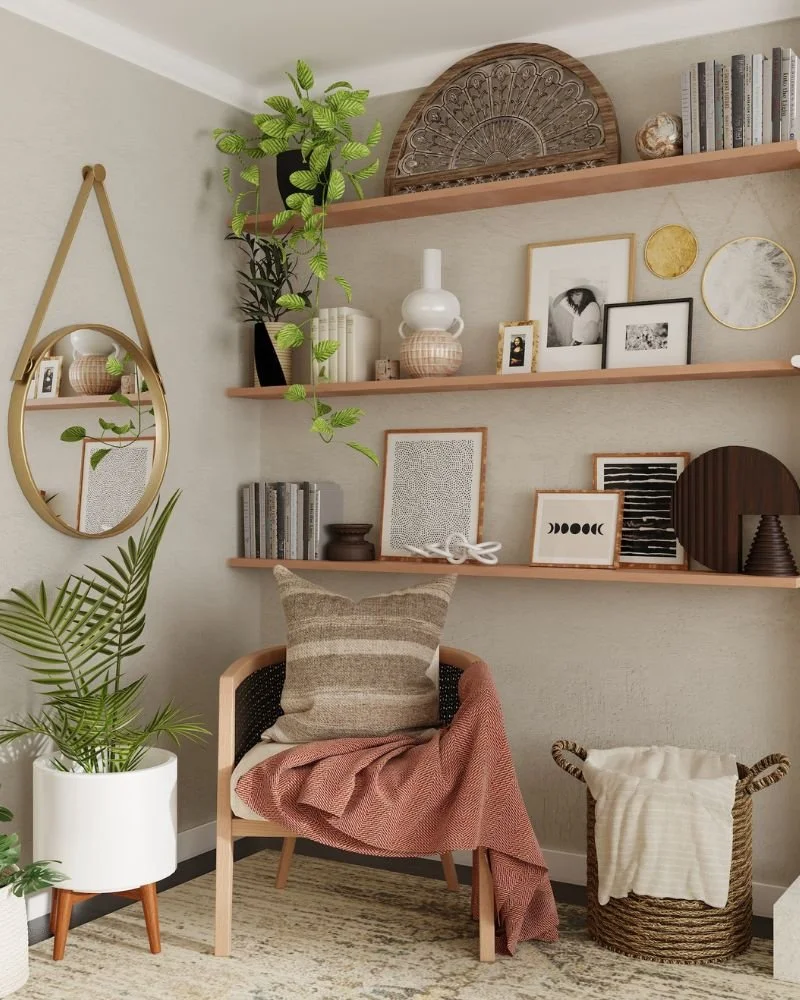Embracing Biophilic Design and Incorporating Nature Into Your Home
In a world that often feels increasingly disconnected from nature, it's no wonder that the concept of biophilic design has been gaining momentum in interior decor. Biophilic design is all about creating spaces that foster a deep connection with the natural world, even in our urban environments. It's about bringing the outdoors in and finding harmony between human life and nature. In this article, we'll explore various ways to embrace biophilic design and incorporate nature into your home, creating a space that not only looks beautiful but also nourishes your well-being.
Lighting: The Natural Ambiance
One of the fundamental aspects of biophilic design is the use of natural lighting. Sunlight has a way of transforming a space, making it feel alive and invigorating. Consider maximizing natural light in your home by using large windows or glass doors. Not only does this reduce the need for artificial lighting during the day, but it also provides a connection to the outdoors. If your home doesn't have an abundance of natural light, you can mimic the effect with lighting fixtures that emulate the warmth and color of natural light. Opt for fixtures with warm, soft tones that create a cozy and inviting ambiance. You can also incorporate dimmable lighting to adapt to different moods throughout the day.
Incorporating Natural Materials and Textures
To truly embrace biophilic design, it's essential to incorporate natural materials and textures into your home. Materials like wood, stone, and bamboo can add warmth and a sense of authenticity to your living spaces. These natural elements not only create a visual connection to the outdoors but also add a tactile dimension to your home. Consider using wood for flooring, furniture, and decor. Stone or natural tiles can be used for countertops or wall coverings, adding a touch of the organic world to your kitchen or bathroom. Textures such as linen, cotton, and jute in your upholstery, curtains, and cushions further enhance the tactile experience.
Lovely Indoor Plants
Indoor plants are the poster children of biophilic design. They bring life, color, and a refreshing breath of fresh air into your home. Plants not only improve air quality but also connect us to the natural world. From tall, leafy monsters to delicate succulents, there's a plant for every space and skill level. Consider creating a dedicated plant corner or a lush indoor garden with a variety of plants. Place them near windows, on shelves, or hanging from the ceiling. The visual appeal and the nurturing aspect of caring for your indoor greenery can have a profoundly positive impact on your well-being.
Say Hello To Natural Colors In Decor
When choosing color palettes for your home, opt for natural and earthy tones. Colors like forest green, earthy browns, soothing blues, and soft neutrals create a calming and harmonious environment. These colors mimic the hues of nature, bringing a sense of tranquility and balance to your living spaces. Consider incorporating these colors through paint, furniture, decor, and textiles. Natural colors not only evoke a connection to the outdoors but also make your home feel more inviting and serene.
Considering Second-Hand or Antique Furniture
Incorporating second-hand or antique furniture into your home is not only sustainable but also aligns with the principles of biophilic design. These pieces often carry a sense of history and craftsmanship, further connecting us to the past and the natural world. Vintage furniture has a charm and character that can't be replicated by modern mass-produced items. Explore local thrift shops, antique stores, or online marketplaces to discover unique furniture pieces that tell a story. Repurpose, refinish, or reupholster these finds to suit your style, giving your home a personal touch that embraces the beauty of the past.
Paying Special Attention To Your Bathroom
The bathroom might not be the first place that comes to mind when you think of biophilic design, but it's a perfect opportunity to turn it into a true oasis. Use natural materials for the bathroom, such as wooden vanities, stone sinks, and tiles with earthy colors and patterns. These elements can create a spa-like atmosphere, making your daily rituals more enjoyable. Another way to bring nature into the bathroom is through plants. Place small potted plants or succulents on shelves, windowsills, or even in hanging planters. The humidity in the bathroom can be perfect for many types of houseplants.
Connecting Your Indoor and Outdoor Space
Creating a seamless transition between your indoor and outdoor spaces is a key element of biophilic design. If you have a backyard, garden, or balcony, consider using large glass doors or sliding windows to visually connect your interior to the natural beauty outside. This connection not only expands your living space but also allows you to enjoy the changing seasons and the beauty of the outdoors. To further connect the two spaces, use complementary decor and furniture styles. Natural materials like wicker or teak can be used in both your indoor and outdoor furniture to create a cohesive and inviting atmosphere.
Incorporating biophilic design into your home can enhance your overall well-being, reduce stress, and create a more peaceful and harmonious living environment. By following these hacks you can create a home that not only looks beautiful but also feels like a sanctuary where you can truly thrive and connect with the natural world. So, start your biophilic design journey and transform your home into a haven of peace and tranquility.

